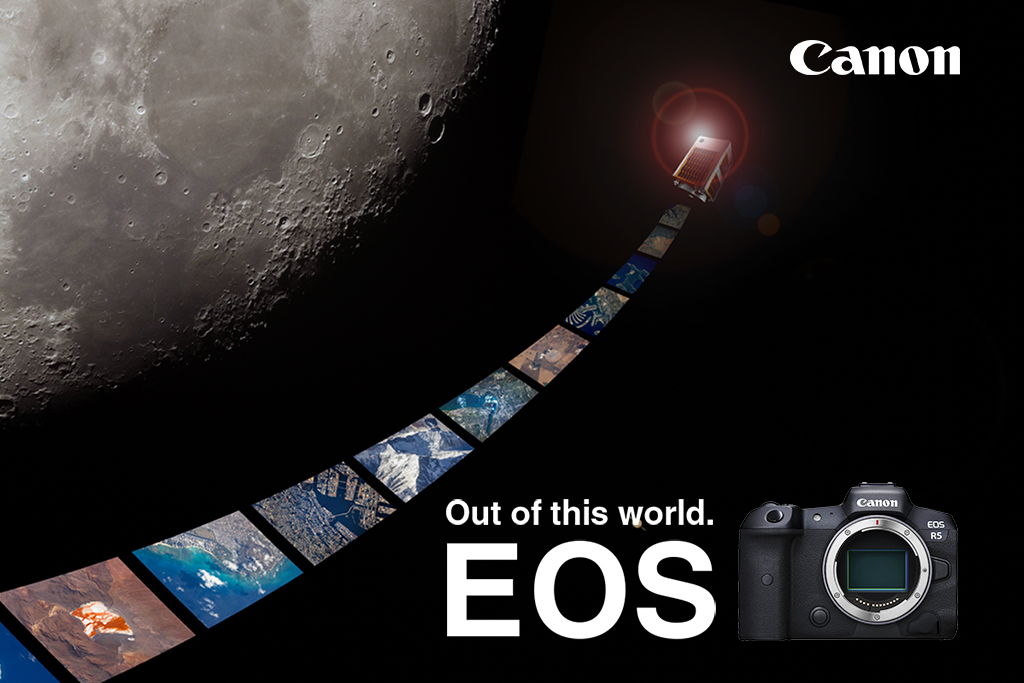
On 17 February 2024 (JST), Canon sent a micro satellite, CE-SAT-IE, into space.
Fun fact #1: The optical satellite was developed in-house by Canon Electronics and Canon’s camera development division to photograph the earth’s surface.
Fun fact #2: The camera that’s being used? A custom-made EOS R5.
You read right. There’s an EOS R5 in outer space orbiting Earth, taking ultra-detailed, high-resolution pictures of Earth’s surface.
Yes, the EOS R5 is capable of out-of-this-world shots—both literally and figuratively!
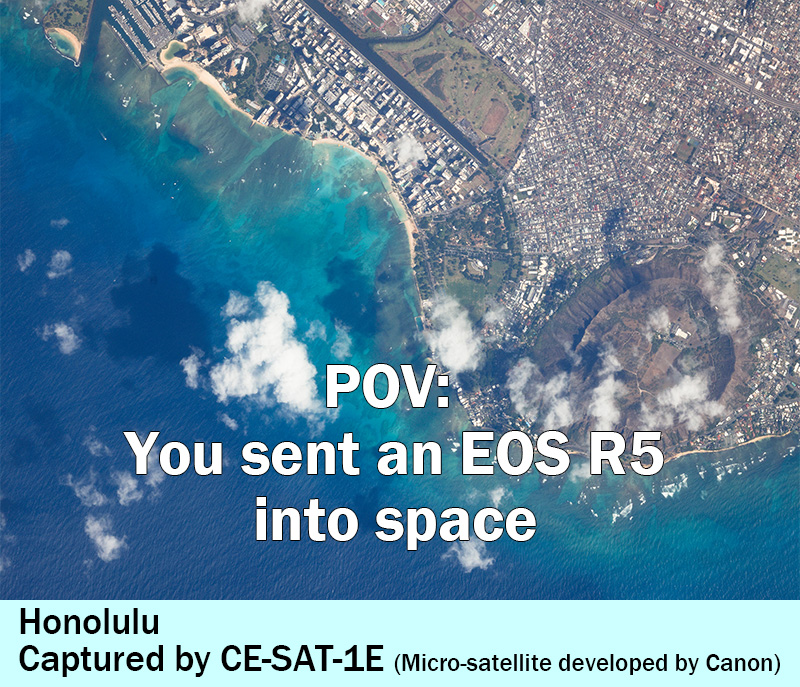
1. It was chosen for its high-resolution capabilities
Canon Electronic’s satellite, the CE-SAT-1E, is an optical satellite designed to capture images of the Earth’s surface from space.
They needed a high-resolution camera capable of generating detailed images and video for map creation and disaster prevention, which would also help check for damage after natural disasters. The EOS R5’s 45-megapixel CMOS sensor and 8K 30p video capabilities fit the bill, providing the best balance between performance and resolution.
The video below shows some more images and footage shot from the EOS R5 on the satellite. Phenomenal, isn’t it?
The JPEG processing speed matters too
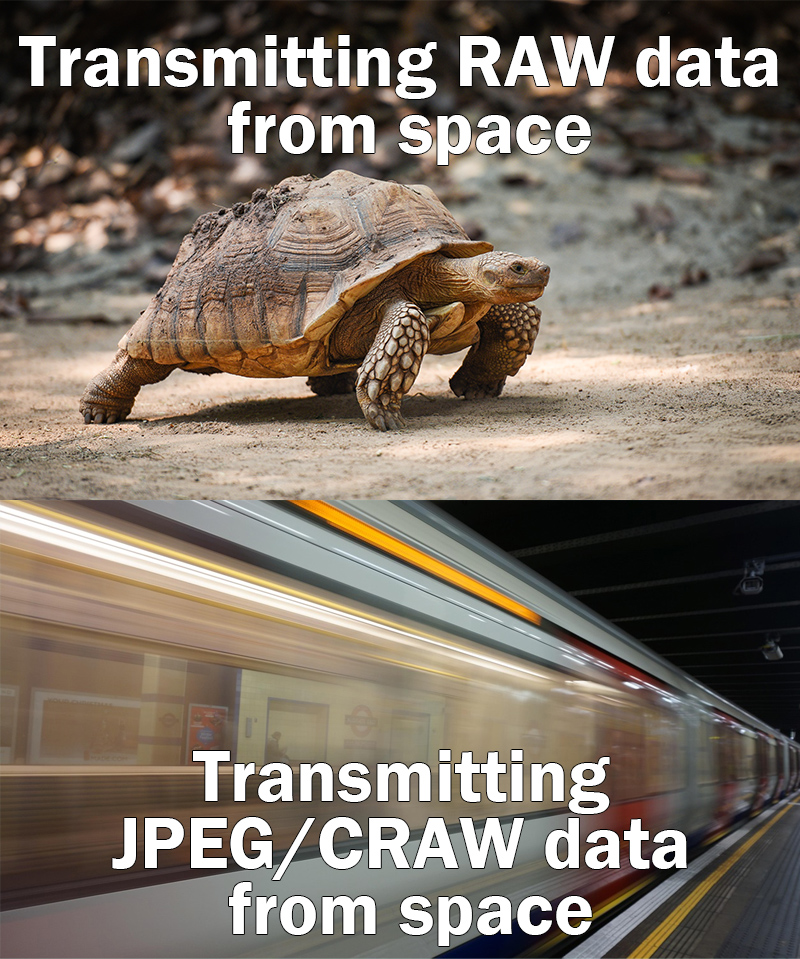
The faster images get transmitted from the optical satellite to Earth, the better. The size of each image file affects transmission speed.
Unlike the conventional cameras on most other optical satellites that capture and transmit RAW format files, which need to be developed one by one, the EOS R5 can instantly generate JPEG and CRAW files that have smaller file sizes than uncompressed RAW. With the extremely powerful DIGIC X image processor, this can be done even when the camera is shooting high-speed bursts at up to 20 fps. This gives the EOS R5 a significant advantage as an optical satellite camera.
About the CT-SAT-1E microsatellite
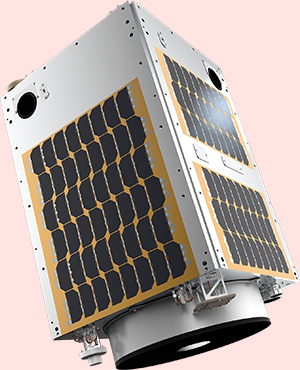
Developed and produced by: Canon Electronics
Dimensions: 50 x 50 x 80cm, approx. 70kg
Orbit: Sun-synchronous
Orbit altitude: 670km
2. It is tough enough to survive a rocket launch
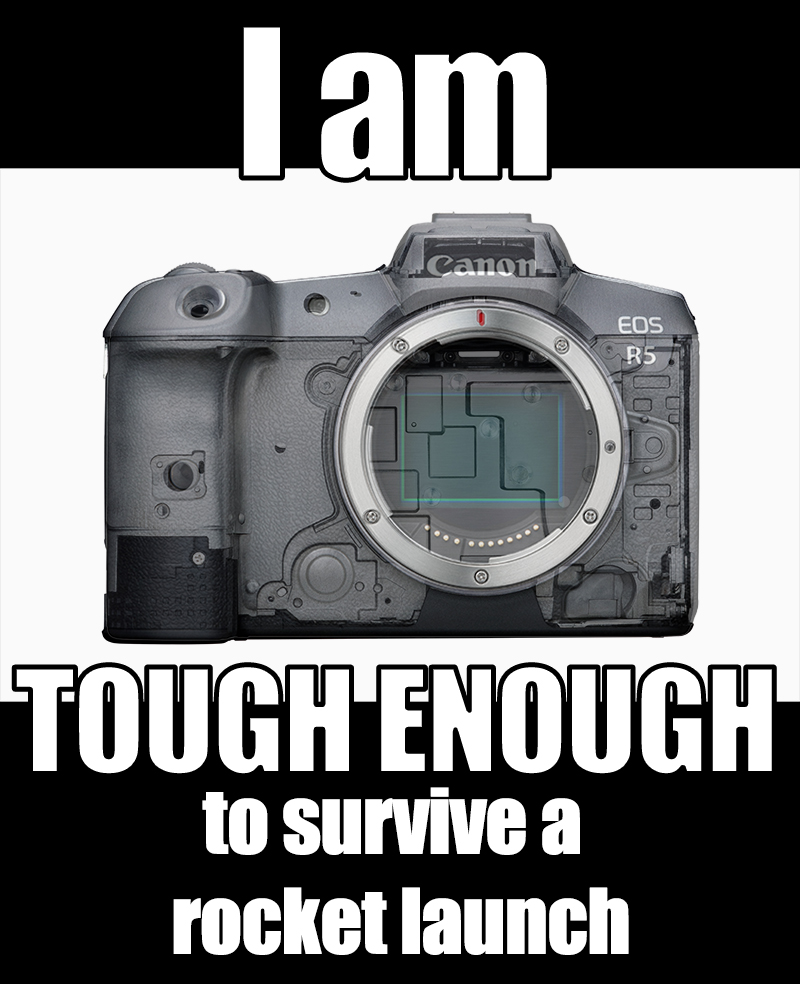
The CE-SAT-1E with the EOS R5 on board was launched into space from JAXA’s Tanegashima Space Center aboard the second H3 Launch Vehicle (H3TF2) on February 17, 2024.
But before the project got this far, there were a few issues that Canon’s engineers had to address.
1. Can the EOS R5 withstand actual launch conditions?
The satellite and everything on it would be subject to tremendous acceleration force and vibration during launch. Would the EOS R5 survive?
Long story short, it would—and without any modifications!
In fact, the EOS R5 is designed to endure conditions harsher than a rocket launch. To be ultra sure, Canon’s developers confirmed this through tests that simulated actual launch conditions. No special improvements were required—the EOS R5 is tough enough!
2. Would it combust in space’s vacuum?
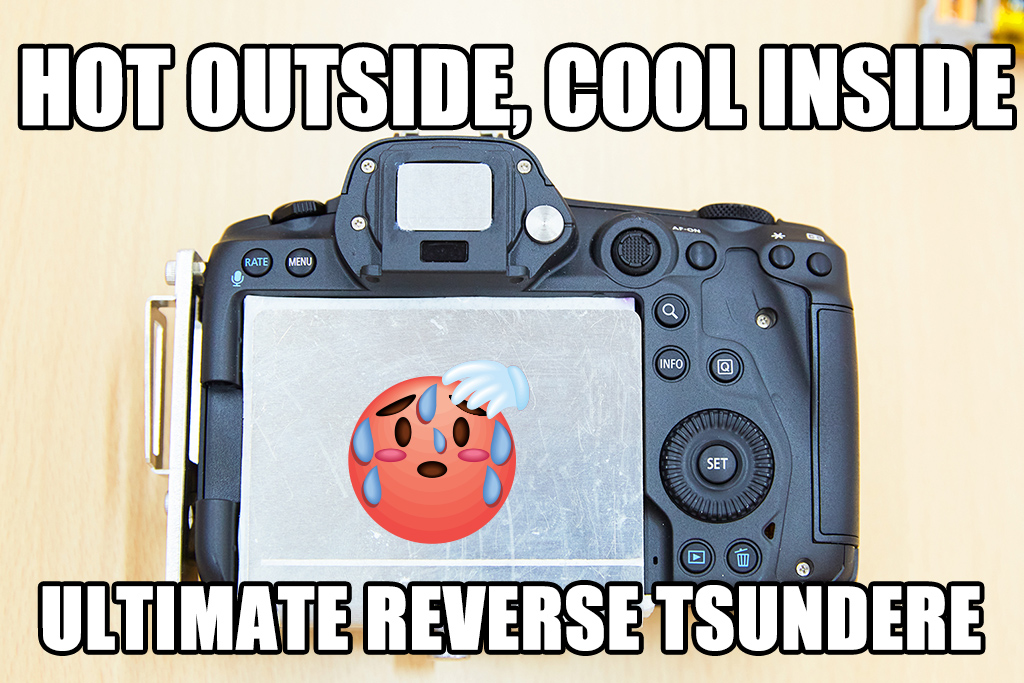
Space is a vacuum, with no air to dissipate heat. Canon’s developers modified the EOS R5 in a few ways.
First, they substituted parts that might burst in vacuum conditions with alternatives.
They also modified the EOS R5’s structure so that heat was directed to the EOS R5’s body for release to the outside. This involved modifying the sensor unit and fixing it in place—viable because in-body image stabilisation, which requires the sensor unit to be able to move freely, would not be used on the satellite.
A metal plate was also mounted on the back of the EOS R5 to further release heat.
3. Cosmic radiation
The developers designed an encapsulating shield based on data from repeated radiation stress tests to the EOS R5. This shield, which is just several millimeters thick, was attached to the satellite.
More than a year on, the EOS R5 in space is still functioning properly.
3. The lens: a reflecting telescope with a 40cm-diameter aperture
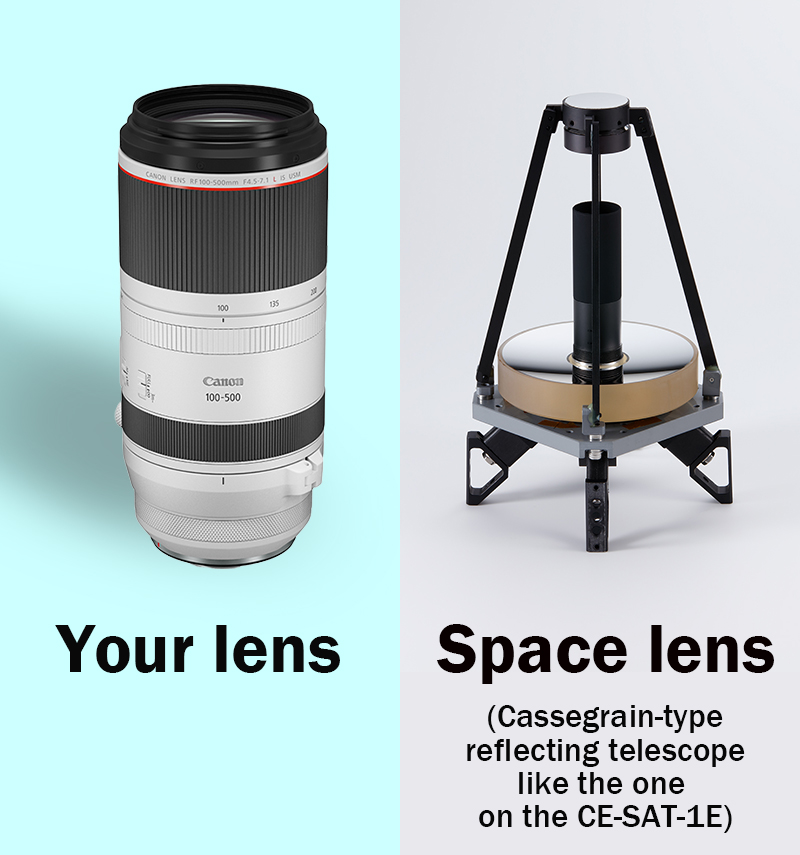
The CE-SAT-IE microsatellite orbits at an altitude of about 670km—far beyond the range of your longest conventional camera lens! The lens used with the EOS R5 in space must be able to:
- Capture a super telephoto focal length
- Cover the EOS R5’s full-frame sensor
- Fit on the 50 x 50 x 80cm micro satellite, which is just around the size of a barrel.
The engineers at Canon Electronics chose to use a Cassegrain design to meet these objectives. Despite being rather short physically, it can achieve a very long focal length. Long enough to zoom in onto planes on the runway all the way from 670km up in space!
To achieve the high optical performance required to support the EOS R5’s high resolution, the new reflecting telescope has optical correction features. Advanced technology was used to produce the lens too, not only for grinding the glass elements but also polishing the curved surfaces of the mirrors, including the primary mirror that determines the lens performance.
It is challenging to make autofocus work with a reflective telescope…

On a conventional camera lens, light passes through the lens aperture and reaches the sensor.
However, in a reflecting telescope, light is reflected twice before it reaches the sensor.
First reflection: Off a doughnut-shaped primary mirror, which has a hole in the centre.
Second reflection: From the secondary mirror onto the sensor.

Autofocus systems require light to work. The hole in the centre of the primary mirror makes focusing complicated as there’s no light passing through it.
To make things even more challenging, there isn’t much light for focusing in the first place: reflecting telescopes generally have high (dark) aperture values.
4. Dual Pixel CMOS AF II technology on the EOS R5 made overcoming these challenges easier

Dual Pixel CMOS AF uses every single one of the approximately 45 megapixels (45,000,000 pixels) on the image sensor to gather information needed for autofocus calculations. (Learn more about how Dual Pixel CMOS AF works).
The precise parallax information acquired from the dense pixel structure aids phase detection (detecting and calculating the distance of objects from the camera). In normal life, it enables quick and accurate autofocusing even under difficult conditions.
In space, with a reflecting telescope, it’s a little more complicated. But being able to use some autofocus technology still helps. The engineers from Canon’s camera development division determined that it was technically feasible to adapt Dual Pixel CMOS AF for a reflecting telescope.
5. Focusing still must be operated from the ground, but at least there is DPAF information!
While the EOS R5 in space has an actuator that can function and achieve accurate focus even in the vacuum of space, the focusing mechanism on the reflecting telescope is not yet automated, so instructions need to be sent from the ground.
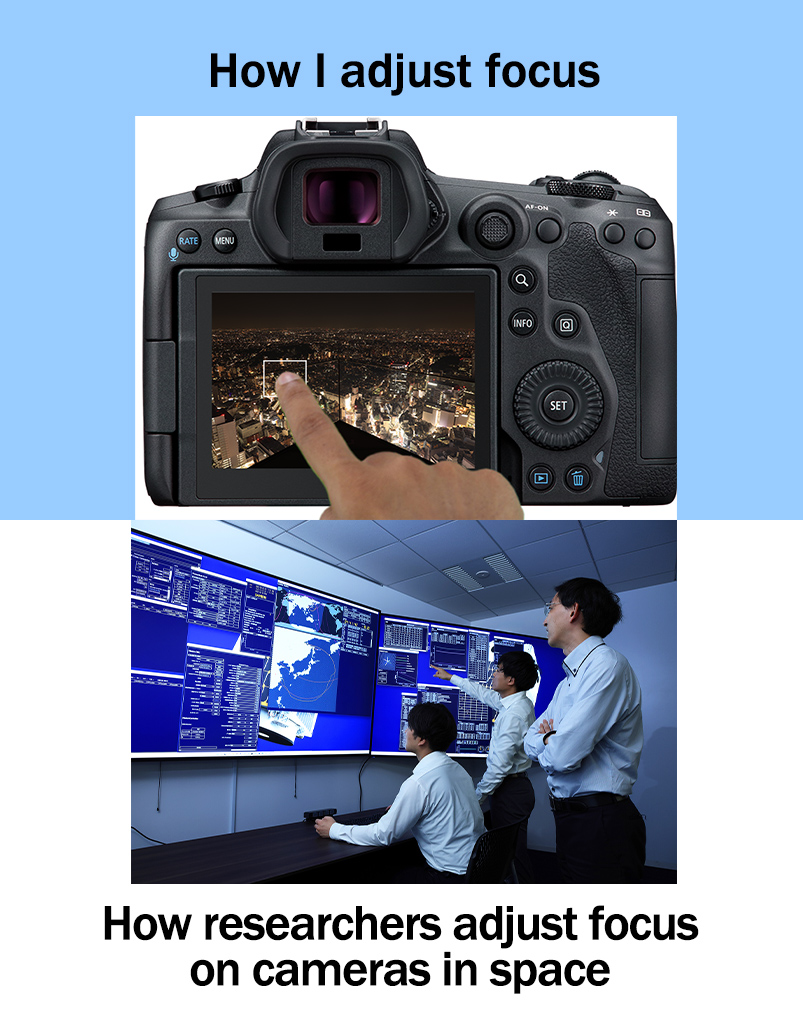
Back on Canon’s first satellite, which was launched in 2017 and equipped with an EOS 5D Mark III, these instructions were based on reference images captured in space and sent to the ground.
However, with the help of Dual Pixel CMOS AF II technology, the EOS R5 on the satellite can detect and calculate the exact focus distance and amount of focus shift required, providing valuable focal position data to complement the reference images. It has definitely streamlined their workflow!
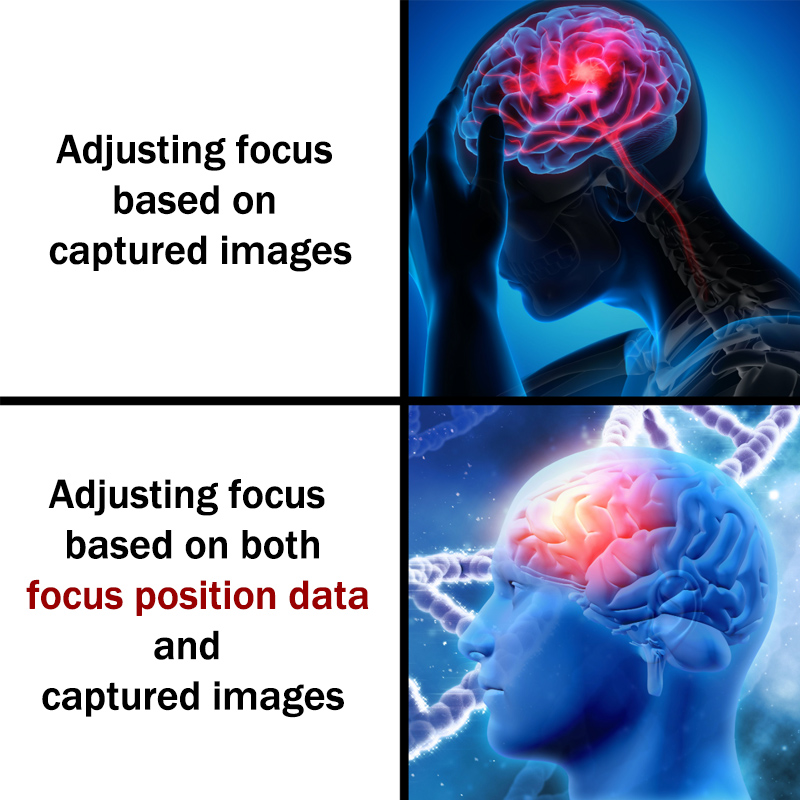
Canon’s engineers aim to enable autofocusing operations entirely within the satellite in the future.
6. Implications for the future
The EOS R5’s successful space deployment showed the possibilities unlocked when consumer technology is adapted for the aerospace business. Being able to use commercial technology for satellites also means that advanced technology can be quickly adapted, allowing satellites to take advantage of the newest EOS features.
The collaboration between Canon Electronics and Canon’s imaging division, enabled by Canon’s culture of cross-division cooperation and diverse talent, made the achievement possible. Canon will continue to leverage on its strengths and improve on its technology.
Click here to read the full interview (PDF)
For more behind-the-scenes stories about product development, see:
5 Key Elements to Developing the RF10-20mm f/4L IS STM
7 Untold Stories of the RF100-300mm f/2.8L IS USM
An Interview with the Developers: Introducing Canon's First Full-Frame Mirrorless Camera, EOS R






















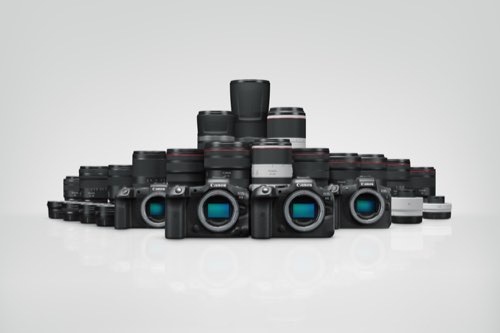








.jpg)


